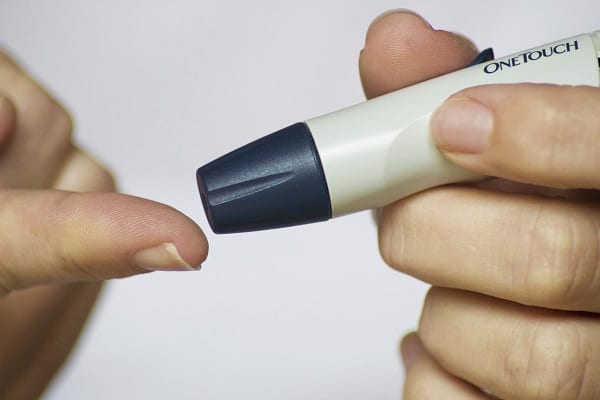BALTIMORE, MD—In conjunction with National Diabetes Month, the Maryland Department of Health (MDH) on Thursday released its first Diabetes Action Plan, which includes intervention strategies for health care providers, stakeholders and individuals to help reduce the burden of diabetes in Maryland.
“Our administration remains committed to ensuring that all Marylanders have the resources they need to lead healthy lives,” said Governor Larry Hogan. “This innovative plan promotes greater coordination to enhance quality of life for Marylanders living with diabetes and ultimately to decrease the prevalence of this disease in our state.”
MDH officials announced the plan during the day-long Diabetes is Primary education conference for 200 physicians and health care professionals organized by the Maryland Chapter of the American Diabetes Association (ADA) at the Hyatt Regency Inner Harbor in Baltimore.
“Nearly 45 percent of the adult population in Maryland has diabetes or prediabetes, and this disease is the sixth leading cause of death in our state,” said MDH Secretary Robert R. Neall. “But the good news is diabetes is generally preventable, and for those with the disease, it can be managed. Our vision is to engage partners across Maryland to coordinate efforts and get the numbers trending downward.”
Neall said the goal of the action plan is to spur increased collaboration with partners throughout the state, employing detailed strategies and educating the public about the disease. MDH will involve local health departments and providers from both public and private sectors.
Deputy Secretary of Public Health Fran Phillips highlighted aspects of the 65-page plan, developed from mid-June through mid-September by a 40-member work group. The plan includes a resource guide, comprehensive data about risk factors and specific intervention strategies. The draft plan was available for public comment from Oct. 7 to Nov. 7.
“This plan is a roadmap for both preventing and managing diabetes. It includes specifics for state agencies, hospitals, physicians, schools, local governments, community-based organizations and individuals. We won’t reverse the tide unless everyone plays a role,” she said.
According to the Centers for Disease Control and Prevention (CDC), nearly 30 million Americans have diabetes. In Maryland, 10.5 percent of adults have diabetes (nearly 500,000) and 34 percent have prediabetes (approximately 1.6 million). Maryland is consistently one of the 25 states with the highest diabetes prevalence rates.
Diabetes is a chronic disease occurring when a person’s blood glucose level is too high due to the body’s inability to properly absorb glucose. Prediabetes refers to the condition in which blood sugar levels are higher than normal, but not high enough to be diabetes. Diabetes often leads to other diseases and serious disabilities. About 95 percent of diabetes in the United States is type 2, which is preventable. Being overweight or obese is the most significant contributing factor in developing the disease.
In Maryland, diabetes disproportionately impacts specific populations based on income and education level, race and ethnicity, geographic location and access to healthcare. Other risk factors include poor nutrition, lack of physical activity and tobacco use.
Mark Luckner, Executive Director of the state’s Community Health Resources Commission, said the Commission will award grant funding to organizations that serve vulnerable populations and address the social determinants impacting diabetes.
“The Commission fully supports implementation of Maryland’s Diabetes Action Plan,” Luckner said. “Diabetes impacts far too many individuals and families in our state. We look forward to bringing access to much-needed services and programming in underserved and at-risk communities and addressing the health inequities that are associated with diabetes.”
According to the American Diabetes Association, medical expenses for diabetes and its complications in Maryland exceed $4.9 billion a year, with another $2 billion in indirect costs from lost productivity.
“We are excited the Health Department chose our Diabetes is Primary conference to launch the Diabetes Action Plan and look forward to working collaboratively to help bend the curve of diabetes in Maryland in the months and years ahead,” said David McShea, Executive Director of ADA’s Maryland Chapter.
Reducing diabetes in the state will require a multi-faceted strategy including:
- Expanding nutrition and obesity prevention programs in every community
- Sharing data among health care providers, program providers and state agencies
- Supporting healthy eating in the workplace, in schools and through health systems
- Assessing the food supply chain to address food pricing and access to healthy foods
- Increasing opportunities for physical activity for students and workers
- Encouraging healthcare providers to refer overweight children and adults to evidence-based weight loss programs and lifestyle counseling
- Establishing referral mechanisms to health care specialists for obese children and adults
- Engaging partners to support state-of-the-art diabetes care including the use of telemedicine, case managers and community workers
To review MDH’s Diabetes Action Plan, go to health.maryland.gov/diabetes-action-plan.
Do you value local journalism? Support NottinghamMD.com today.

